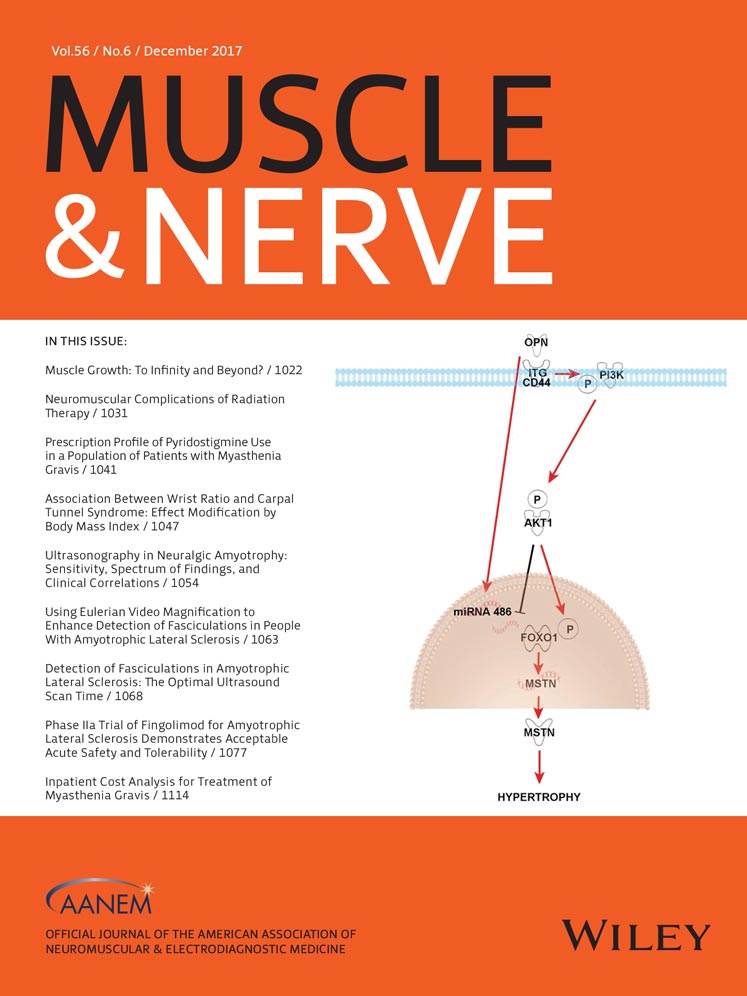Charcot–Marie–Tooth disease type 1C: Clinical and electrophysiological findings for the c.334G>a (p.Gly112Ser) Litaf/Simple mutation
This work was supported by a grant from the National Institute of Neurological Disorders and Stroke (to M.E.S.) and the Office of Rare Diseases (U54NS065712 to M.E.S.), Muscular Dystrophy Association (to M.E.S., and a clinical research training grant to N.U.J.), and the Charcot-Marie-Tooth Association (to M.E.S.).
ABSTRACT
Introduction
Charcot–Marie–Tooth disease type 1C (CMT1C) is a rare, dominantly inherited neuropathy caused by mutations in the lipopolysaccharide-induced tumor necrosis factor (LITAF) or small integral membrane protein of the lysosome/late endosome (SIMPLE) gene.
Methods
We present a case series comprised of 10 patients in whom CMT1C is caused by a Gly112Ser substitution in the encoded protein. We focus on clinical presentation, electrodiagnostic analyses, and our findings in the context of previously described cases.
Results
The Gly112Ser mutation causing CMT1C is a mild form of CMT, as patients walked on time, had less weakness than those with Charcot–Marie–Tooth disease type 1A (CMT1A), had a CMT neuropathy score (CMTNS) indicative of mild disease, and had faster ulnar and median motor nerve conduction velocities compared to those with CMT1A.
Discussion
The G112S mutation in LITAF seems to be clinically indistinguishable from a mild presentation of CMT1A. Muscle Nerve 56: 1092–1095, 2017




